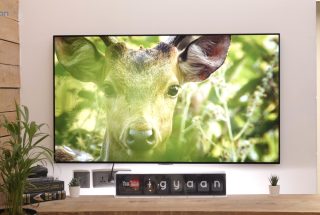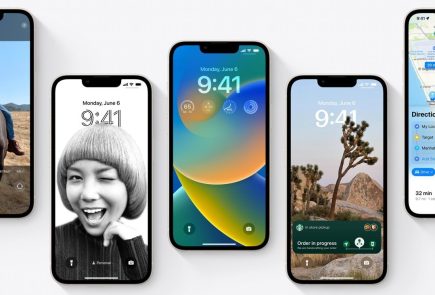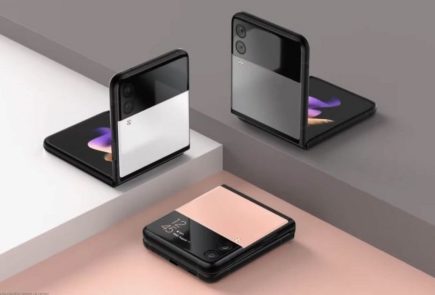OnePlus 7 Pro Vs Galaxy Note 10+, Which One Should You Pick?

Earlier this week, Samsung launched the Galaxy Note 10+ which is targeted towards the premium segment. Following the smartphone’s launch in the US, the company has also started taking its pre-orders in India. Clearly, the Galaxy Note 10+ is one of the best Android smartphones that are currently on offer.
Besides, the OnePlus 7 Pro is another device that is a worthy contender to this title. Due to the difference in price and specifications, it can be perplexing for the user which device should they pick. In order to simplify the process, we have written a detailed guide that will help you reach the decision and you will be able to pick the best device for yourself based on your requirements.
Design And Build

The front of Galaxy Note 10+ features a punch hole that houses the selfie camera, on the other hand, the OnePlus 7 Pro has a pop-up selfie camera. The front of the two smartphones have negligible bezels on all sides and have a display that tapers towards the sides.
The rear of both the Galaxy Note 10+ and OnePlus 7 Pro is made out of Glass which carries the company branding and the camera setup. Overall, both the devices are made out of premium materials including glass and metal and they seem to be equally well built.
Design is one department that is highly subjective and it varies based on every user’s preference, therefore it is not feasible to choose a clear winner. Hence, this is one department in which the user must choose their poison.
Display
The Galaxy Note 10+ features a 6.8 inch Dynamic AMOLED display that has a pixel density of 498ppi and is safeguarded with Corning Gorilla Glass 6. On the other hand, the OnePlus 7 Pro has a 6.67 inch Fluid AMOLED display. The display panel has a pixel density of 516 ppi and is protected with Corning Gorilla Glass 5.
Both the size and pixel density of the display on the two smartphones are similar. However, one notable difference is the 90 Hz refresh rate of OnePlus 7 Pro’s display.
We are yet to get our hands on the Note 10+, nonetheless, we have already experienced the Galaxy S10 lineup that features the same display with a smaller size. The display on the device has excellent viewing angles and colour reproduction.
But, it cannot match the smoothness that the 90 Hz display panel that is found on the OnePlus 7 Pro. Therefore, we give this round to the OnePlus’ offering.
Battery
The battery is an important aspect of every smartphone and could be the key decisive factor for a large number of users. Fortunately, both smartphones are powered by large-sized batteries that support fast charging.
The OnePlus 7 Pro is powered by a 4,000 mAh battery that supports 30 W Warp charging. In contrast, the Samsung Galaxy Note 10+ features 4300 mAh battery that supports 45 W fast charging.
Not only does the Samsung smartphone have a bigger battery and supports significantly faster-charging speeds, but it also supports wireless charging upto 20 W and reverse wireless charging. Therefore, the clear winner in this domain is the Samsung Galaxy Note 10+.
Chipset
The Galaxy Note 10+ features the Samsung made Exynos 9825 SoC while the OnePlus 7 Pro features the Snapdragon 855. Both the chipsets are manufactured using a 7 nm fabrication process and consist of an Octa-Core CPU.
In terms of performance, both devices are expected to have comparable performance. However, we will have to wait until we get the Note 10+ to compare it against the OnePlus 7 Pro.
[Note: the US variant of the Note 10+ packs Snapdragon 855, which is not being talked about in this article]
Storage
The Galaxy Note 10+ and the OnePlus 7 Pro are offered in two storage variants which are listed below:
| Storage Variant 1 | Storage Variant 2 | |
| OnePlus | 6 GB RAM + 128 GB ROM | 8 GB RAM + 256 GB ROM |
| Samsung | 12 GB RAM + 256 GB ROM | 12 GB + 512 GB ROM |
We believe RAM capacities of upto 8 GB are more than sufficient to play any kind of applications including heavy games. However, as technology improves, graphics-intensive games including PUBG can benefit from additional RAM found on the Galaxy Note 10+.
The Samsung Galaxy Note 10+ is available in upto 512 GB of inbuilt storage. Besides, it also supports memory expandability upto 1 TB via a microSD card.
The higher RAM capacity, option to choose more storage and support for memory expansion makes the Galaxy Note 10+ a better choice than the OnePlus 7 Pro in this area.
[Bonus Tip: Both smartphones use UFS 3.0 storage which offers comparatively faster read and write speeds]
Camera
The two devices in our comparison have a single camera on the front. As previously mentioned the OnePlus 7 Pro has a motorised pop-up camera that has a resolution of 16 MP while the Galaxy Note 10+ has a 10 MP sensor that has dual-pixel technology.
Both the smartphones have multi-camera setup on the back. The Note 10+ has a quad-camera setup which consists of a 12 MP + 12 MP + 16 MP +ToF sensor. In comparison, the OnePlus 7 Pro only has a triple camera setup which consists of 48 MP + 8 MP + 16 MP sensors.
The two devices can also capture upto 2160p videos @ 30 fps from the rear camera setup. Moreover, the front camera of the Galaxy Note 10+ can also capture 2160p video @ 30 fps while its competitor’s video capturing capability from the selfie camera is limited to 1080p @ 30 fps.
The presence of a ToF camera an better video output form selfie camera allows the Samsung Galaxy Note 10+ to pull ahead of it competitor. At least on paper, the Samsung offering is superior to OnePlus but we will also test the camera on two once the Note 10+ starts shipping later this month.
Connectivity and Other Features
Connectivity options on Samsung Galaxy Note 10+ and OnePlus Pro are also alike. The two devices support 802.11 a/b/g/n/ac W-Fi, Dual LTE, Bluetooth 5.0, GPS, NFC and USB Type C port.
The two flagship smartphones have an under-display fingerprint scanner which is a nifty feature. However, the Galaxy Note 10+ uses an ultrasonic sensor while the OnePlus 7 Pro employs an optical sensor.
Although sensors on both smartphones can instantly bypass the lock screen, the ultrasonic scanner found on the Note 10+ is regarded as more secure and reliable. It tends to work fine even if the user’s hands are smushed with dirt or oil.
The ultrasonic waves can penetrate such substances whereas an optical sensor won’t be able to match biometrics in case the user has an untidy finger.
Other notable features that the Galaxy Note 10+ offers that are absent on the OnePlus offering, include DeX, an Sp02 meter and S-Pen.
DeX is short for Desktop Experience, this feature can mirror the contents of the Galaxy Note 10+ on a large screen display. It utilises the phone hardware to produce a desktop-like experience possibly replacing a laptop or desktop computer in certain scenarios.
The SpO2 sensor stands for peripheral capillary oxygen saturation it is used to estimate the amount of oxygen in the blood. Therefore, users that have certain health conditions, this feature of Galaxy Note 10+ can be highly beneficial.
The Galaxy Note 10+ also ships with the all new S-Pen which adds a whole new dimension of wireless control to the device like remotely clicking pictures or navigating between apps.
Price And Conclusion
| Specifications | OnePlus 7 Pro | Samsung Galaxy Note 10+ |
| Price |
6 GB + 128 GB: 48,999 8 GB + 256 GB: 52,999 |
12 GB + 256 GB: 79,999 12 GB + 512 GB: 89,999 |
| Display |
6.67 inch Fluid AMOLED 90 Hz 3120 x 1440 QHD+ 19.5:9 Aspect Ratio 516 ppi Corning Gorilla Glass 5 |
6.8 inch Dynamic AMOLED 60 Hz 3040 x 1440 FHD+ 19:9 Aspect Ratio 498 ppi Corning Gorilla Glass 6 |
| Chipset |
Snapdragon 855 7 nm Fabrication Process Octa-core Adreno 640 GPU |
Exynos 9825 7 nm Fabrication Process Octa-core Mali G76 MP12 GPU |
| RAM |
6 GB 8 GB |
12 GB |
| Storage | 128 GB
256 GB |
256 GB 512 GB |
| Primary Camera |
48 MP, f/1.8, Sony IMX582 (PDAF) 8 MP, f2.4 (Telephoto) 16 MP, f/2.4 (ultrawide) 2160p video@60fps 720p video@480fps |
12 MP, f/1.5-2.4 (PDAF) 12 MP, f/2.1 (Telephoto) 16 MP, f/2.2 (ultrawide) TOF 3D VGA camera 2160p video@60fps 720p video@960fps |
| Front Facing Camera | 16 MP
1080p@30fps |
10 MP
2160p@30fps |
| Battery |
4000 mAh battery 30 Watt Warp Charge |
Non-removable Li-Ion 4300 mAh battery 45 Watt Fast Charge Ships With 25 W charger |
| Other Features | In-display Fingerprint scanner (Optical) Face unlock |
In-display Fingerprint scanner (Optical Sensor) Face unlock DeX Support Sp02 Meter S-Pen |
Also Read: Qualcomm Snapdragon 865 Benchmark Scores Leaked On Geekbench
As previously mentioned, both the devices are one of the best Android smartphones that money can buy. We have laid out all the differences in an easy to grasp manner so you can make the right choice based on your needs.
We feel the OnePlus 7 Pro offers better value in comparison to the Note 10+. However, if you are not constrained with a budget and you want a no holds barred phone that offers higher storage capacities, has several other bells and whistles like the S-Pen and absurdly fast 45 W fast charging, the Note 10+ has to be the device of your choice.
Would you like us to write more such articles and what are your thoughts on this one? Do Let us know in the comments below.





























